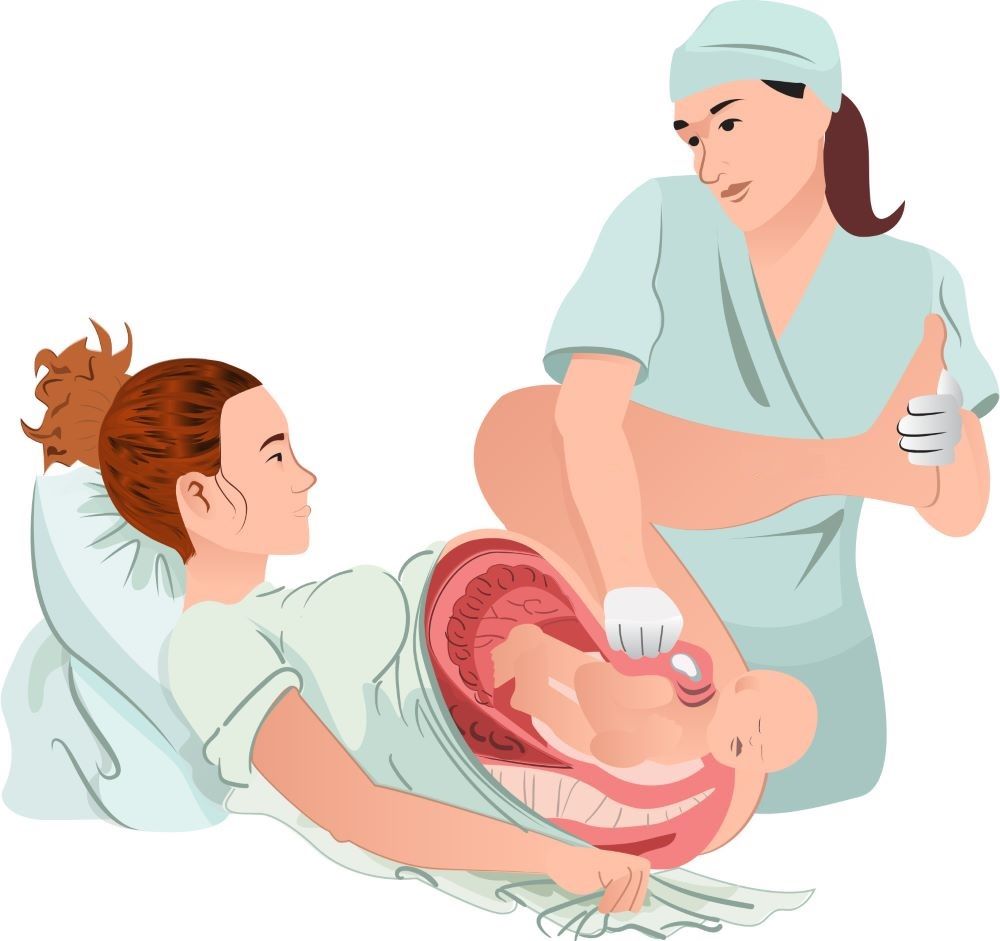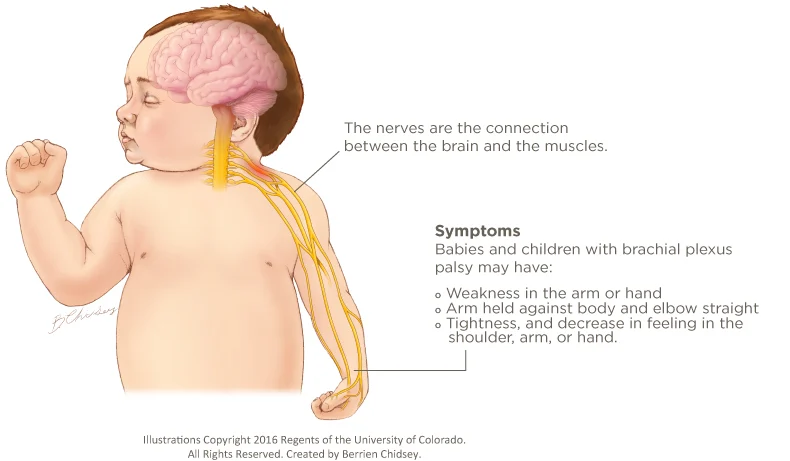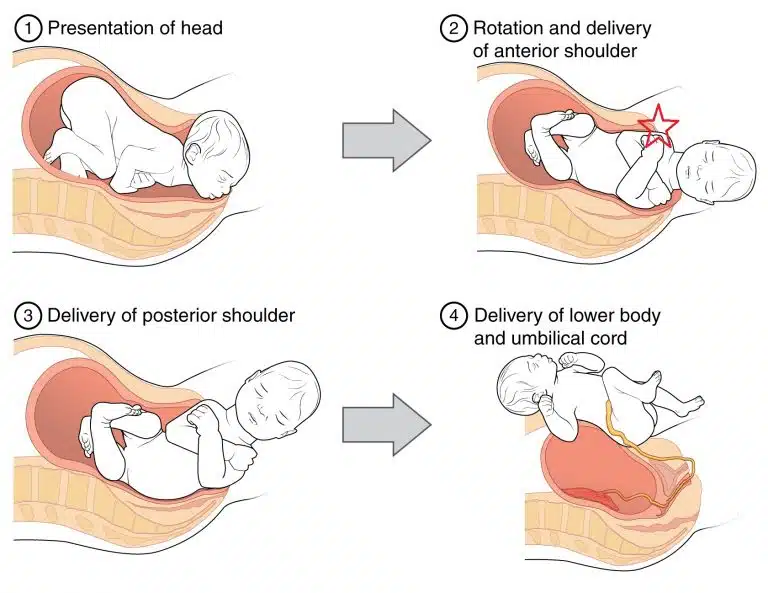Last Updated on November 7, 2024 by Michelle Wan
Shoulder dystocia is a critical condition that can lead to severe birth injuries, both to the infant and the mother. It occurs when a baby’s shoulder becomes stuck behind the mother’s pubic bone during delivery. This obstetric emergency requires immediate intervention, and when handled improperly, it can result in medical claims. In this post, we’ll dive into the complexities of shoulder dystocia, its risks, how medical professionals should manage it, and what legal options families have if medical negligence occurs.
If you or a loved one has suffered due to shoulder dystocia during labour, understanding this topic is crucial. Our firm specializes in malpractice, particularly cases involving shoulder dystocia, helping families nationwide—and especially in Houston, TX—get the compensation they deserve. This article explains shoulder dystocia, its complications, and your legal rights in clear, understandable terms.
Why Shoulder Dystocia Occurs?
According to the American College of Obstetricians and Gynecologists (ACOG), Shoulder dystocia is a complication during labour where the baby’s anterior shoulder becomes stuck behind the maternal pubic bone after the baby’s head has been delivered. This complication is relatively rare but is considered an obstetric emergency because it can cause severe complications if not managed properly.
Shoulder Dystocia And Birth
Several risks for shoulder dystocia can increase the likelihood of this complication occurring during labour and delivery. These include:
- Gestational diabetes
- Maternal obesity
- Excessive maternal weight gain during pregnancy
- Large birth weight
- A history of shoulder dystocia in previous deliveries

Understanding these increased risk factors allows healthcare providers to anticipate the potential for shoulder dystocia and plan accordingly to reduce risks.
How Can Medical Personnel Anticipate Shoulder Dystocia?
While shoulder dystocia is often unpredictable, medical personnel should be trained to recognize early signs and risk for shoulder dystocia to manage it effectively. Using ultrasound to estimate the birth weight and carefully monitor labour progress can help providers prepare for the possibility of shoulder dystocia.
Birth Injuries from Shoulder Dystocia
When shoulder dystocia occurs, it can lead to several injuries, many of which can have long-term effects on the child’s health and development.
Brachial Plexus Injuries
One of the most common injuries associated with shoulder dystocia is a brachial plexus injury, which occurs when the network of nerves controlling the shoulder, arm, and hand is damaged. This can result in:
- Weakness or paralysis of the affected arm
- Lack of muscle control in the hand or arm
- Permanent nerve injuries

Complications of Shoulder Dystocia
When shoulder dystocia is not properly managed, excessive force may be used to deliver the baby through the birth canal. This can cause severe injuries to both the infant and the mother, leading to long-term complications such as permanent neurologic injury in the baby.
How Is Shoulder Dystocia Managed
The management of shoulder dystocia is critical to prevent serious injuries. Medical professionals must act quickly to relieve the obstruction.

Maneuvers Used To Manage Shoulder Dystocia
When a baby’s shoulder becomes stuck during delivery, several medical techniques, or maneuvers, can be used to free the shoulder and safely deliver the baby. These maneuvers include:
- McRoberts maneuver: The mother’s legs are flexed tightly to her abdomen to change the angle of the pelvis.
- Suprapubic pressure: Pressure is applied just above the pubic bone to help dislodge the anterior shoulder.
- Delivery of the posterior shoulder: The healthcare provider may attempt to rotate and deliver the posterior shoulder first to reduce tension.
Using these appropriate maneuvers can significantly reduce the risk of brachial plexus injuries and other complications.
Risk Factors and Prevention of Shoulder Dystocia
While shoulder dystocia can’t always be prevented, understanding the risk factors can help healthcare providers better prepare.
Risk Factors for Shoulder Dystocia?
As mentioned earlier, factors such as gestational diabetes, maternal weight gain, and a large birth weight increase the risk of shoulder dystocia.
Can Shoulder Dystocia Be Prevented?
In some cases, shoulder dystocia may be anticipated if the baby is suspected to be large. However, predicting shoulder dystocia with complete accuracy is difficult. In certain situations, a planned cesarean section may be recommended if the risk of shoulder dystocia is deemed high due to factors such as a large baby or a history of shoulder dystocia.

Medical Malpractice and Shoulder Dystocia
When medical errors occur during the management of shoulder dystocia,it can result in claims. Understanding your legal options is essential if you believe medical negligence caused or worsened the situation.
Improper Management
Yes. If medical personnel fail to take the proper actions during a shoulder dystocia emergency, resulting in harm to the baby or mother, they may be liable for malpractice. This could include failure to use the correct manoeuvres, excessive force, or delays in taking action.
Medical Negligence in Shoulder Dystocia Cases
Medical negligence occurs when a healthcare provider’s actions (or inactions) deviate from the accepted standard of care, causing injury. In shoulder dystocia cases, negligence might involve failing to recognize warning signs, improperly managing the delivery, or using excessive force, leading to severe injuries.
Legal Rights For Malpractice Claim
If your child suffered a shoulder dystocia injury during delivery, you may be entitled to compensation for medical bills, long-term care, and emotional distress.

Steps to File a Claim
To file a claim, you must prove that medical professionals were negligent during the delivery and that this negligence directly caused the injuries. Gathering medical records and consulting with a malpractice attorney who can guide you through the process is essential.
Compensation From A Shoulder Dystocia Lawsuit
Families who file a successful claim may receive compensation for:
- Medical bills for the child’s ongoing treatment
- Emotional pain and suffering
- Long-term rehabilitation costs
- Loss of quality of life.
How a Medical Malpractice Law Firm Can Help
If you’ve experienced the devastating consequences of shoulder dystocia, the Thomas & Wan law firm is here to help. With decades of experience handling claims involving birth injuries, we’re dedicated to ensuring that families get the justice they deserve.
Our team understands the emotional and financial burden that comes with shoulder dystocia injuries, and we’ll work tirelessly to secure the compensation you’re owed. If you’re in Houston or anywhere nationwide, contact us today for a free consultation to discuss your case.
This comprehensive guide to shoulder dystocia and medical malpractice explains the risks, management, and legal avenues available to families affected by this condition. With the right legal support, you can take steps to secure your family’s future.




